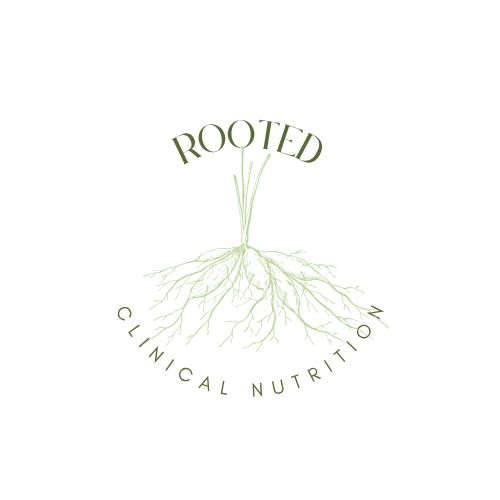Making Every Bite Count
Dietary Guideline for Americans 2020-2025
The Dietary Guidelines for Americans, 2020–2025 included a call to action for the American people to “make every bite count” by focusing on nutrient dense foods and not consuming more calories than the daily recommendation. Over decades, scientists have researched the effects of food and beverages on human health. Every five years the US Department of Agriculture (USDA) and US Department of Health and Human Services (HHS) update the guidelines and recommendations to keep up to date with current research and notify the general public. The 2020-2025 guidelines were the first set of guidelines to include nutrition information for all stages of life from birth to older adults. It also includes information for pregnant and lactating women to ensure they are meeting nutritional requirements to support these processes. The main takeaways from the Dietary Guidelines are simple: eat nutrient dense foods of your own preference from all main food groups, while staying within your calorie limit, no matter what life stage you are in. It’s also important to limit added sugar, saturated fat, salt, and alcohol in your diet. Most everyone would agree with both of these statements but there are controversies surrounding the limitations. For example, the Dietary Guidelines further recommend that Americans, ages 2+, should limit added sugar consumption to less than 10% of their daily calorie intake. Say you consume a standard 2,000 calorie diet, so no more than 200 calories (about 12 teaspoons), should come from added sugar. If you look at the American Heart Association (AHA) recommendations for daily sugar consumption you’ll find that the two don’t match up. The AHA recommends less than 150 calories (9 teaspoons) of sugar for men and less than 100 calories (6 teaspoons) for women. So who is correct and which recommendation do we follow? The American Cancer Society (ACS) and World Health Organization (WHO) seem to agree with the Dietary Guidelines limitation on sugar consumption, but the WHO does suggest consumption to be less than 5%, about 100 calories. It has been determined that a diet high in added sugars can lead to detrimental health problems and chronic diseases including: type 2 diabetes, cardiovascular disease and metabolic syndrome. These conditions can also lead to an increased risk of cancer and stroke.
Cultural Dietary Guidelines
The Standard American Diet (SAD) is often high in sugar, saturated fat, salt and alcohol. In other countries around the world, they tend to eat different foods that influence their culture. In France, they recommend consuming 5 servings of fruits and vegetables a day; beans/lentils twice per week; eat organic and seasonal foods; starchy foods can be consumed daily (bread, pasta, rice) and limit the consumption of meat excluding fish and poultry. They also recommend limiting sugar, alcohol and salt. This is not much different than the recommendations in the U.S. besides the limitation of meat. In Spain, they recommend focusing on consuming fruits, vegetables, whole grain cereals and healthy proteins. They recommend consuming a mix of legumes, nuts, fish and eggs as the main protein source while limiting meat consumption. If you want to eat meat, they recommend white meat only (poultry/fish). Spain recommends that water should be your main drink of choice (my personal favorite!), consuming more olive oil and increasing physical activity. Spain also recommends limiting sugar, saturated fats, and salt.
I think most countries around the world would agree that these limitations, while not always fun and exciting, are extremely important to protect our long-term health and wellness, moderation is key after all. We can make every bite count by choosing nutrient dense foods to satisfy our hunger and stay healthy!
References
Olsson E. Salmon and Quinoa Dish.; 2019. Accessed April 7, 2024. https://unsplash.com/photos/vegetable-salad-KPDbRyFOTnE.
U.S. Department of Agriculture and U.S. Department of Health and Human Services. Dietary Guidelines for Americans, 2020-2025. 9th Edition. December 2020. Available at DietaryGuidelines.gov.
Snetselaar LG, de Jesus JM, DeSilva DM, Stoody EE. Dietary guidelines for americans, 2020-2025: understanding the scientific process, guidelines, and key recommendations. Nutr Today. 2021;56(6):287-295. doi:10.1097/NT.0000000000000512
Get the facts: added sugars. Centers for Disease Control and Prevention. Updated November 28, 2021. Accessed April 7, 2024. https://www.cdc.gov/nutrition/data-statistics/added-sugars.html#:~:text=Americans%20should%20limit%20their%20added%20sugars&text=Americans%202%20years%20and%20older,sugars%20(about%2012%20teaspoons).
How much sugar is too much? American Heart Association. Accessed April 7, 2024. https://www.heart.org/en/healthy-living/healthy-eating/eat-smart/sugar/how-much-sugar-is-too-much#:~:text=AHA%20Sugar%20Recommendation&text=Men%20should%20consume%20no%20more,32%20grams)%20of%20added%20sugar!
Epner M, Yang P, Wagner RW, Cohen L. Understanding the link between sugar and cancer: an examination of the preclinical and clinical evidence. Cancers (Basel). 2022;14(24):6042. Published 2022 Dec 8. doi:10.3390/cancers14246042
Paglia L. The sweet danger of added sugars. Eur J Paediatr Dent. 2019;20(2):89. doi:10.23804/ejpd.2019.20.02.01
Food based dietary guidelines – France. Food and Agriculture Organization of the United Nations. Accessed April 7, 2024. https://www.fao.org/nutrition/education/food-dietary-guidelines/regions/countries/france/en/
Food based dietary guidelines – Spain. Food and Agriculture Organization of the United Nations. Accessed April 7, 2024. https://www.fao.org/nutrition/education/food-dietary-guidelines/regions/countries/spain/en/

